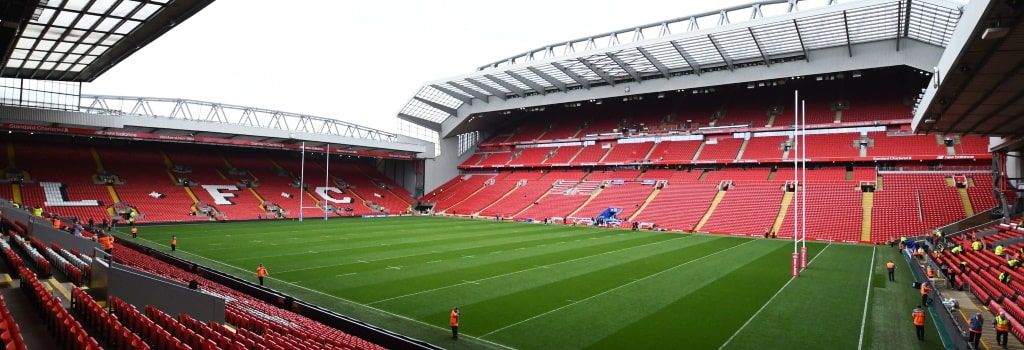

In the world of football, few grounds are as iconic as Anfield. Known for its famous European atmosphere, the home to Liverpool Football Club has witnessed some of the most breath-taking moments in the sport's history. In recent years, the 4-3 Europa League quarter-final second-leg victory over Borussia Dortmund, and, of course, the 4-0 triumph against Barcelona in May 2019 are two memorable matches that will live long in the memory. Before those, few can forget Stan Collymore's winner versus Newcastle back in 1996. However, things could have been very different for the six-time European champions. So, should the Reds have left Anfield for a new stadium?
For around ten years, speculation surrounded Anfield's future and the prospect of Liverpool moving to a new stadium. Now, fans will be thankful that Fenway Sports Group opted to stay at Anfield. After being constructed in 1884, the 19-time league champions moved into the ground eight years later following their formation. Since then, the stadium has witnessed trophy-winning success and the performances of world-class players. These include Ian Rush, Kenny Dalglish, Luis Suarez, Steven Gerrard, and Mohamed Salah, who is currently 11/10 in Premier League betting to win the Golden Boot in 2020-21, as of February 8th.
It's a testament to the ground's unrivalled atmosphere that, back in 2019, Manchester City's Pep Guardiola stated the Anfield is like "no other stadium in the world". He isn't alone in praising the iconic ground's famous atmosphere, as Arsene Wenger and Jose Mourinho have also done so in the past. Although a new venue may have opened the door to profitable opportunities, West Ham has learnt from leaving Upton Park that the grass isn't always greener.
During the early 2000s, there were suggestions that Liverpool was considering a move away from Anfield. In hindsight, such a development would have robbed fans of iconic home victories, such as Barcelona and Dortmund. In 2002, Ricky Parry, the at-the-time Chief Executive, announced plans to build a new stadium in Stanley Park. Fundamentally, pre-existing restrictions didn't allow for Anfield's expansion, and that's why such ideas had been put in place.
At the time, Anfield's capacity sat at around 45,000. By comparison, the planned Stanley Park Stadium would have taken that total up to 60,000, with the potential to add another 13,000. If built, and including the further seating, the project would have seen the Reds play their football in the third-largest football ground in England, behind only Wembley and Old Trafford.
Following the plans, Stanley Park Stadium was due to open in 2006. However, for numerous reasons, the project never came to fruition. Under George Gillette and Tom Hicks, the club lacked the funds to build the £400-million stadium. Following that, in 2012, FSG, the current owners, opted to instead redevelop Anfield.
For football fans, it's hard to imagine the Reds anywhere other than at Anfield. It seems bizarre that, at one stage, moving was a genuine possibility. Under Jurgen Klopp, the stadium became a fortress and one of Europe's most-feared away days for domestic and European opposition. Now, as well as a past, Anfield has a future that promises sustained success.
An in-depth look at the biggest football attendances ever recorded, from the 1950 World Cup to pre-season friendlies in the States and the Scottish ground with dozens of 100,000+ attendances
Taking my son to his first football match was one of the best experiences I've had as a father so far. I've written this article for Alex to read when he gets older.
All good things have to come to an end, and the same unfortunately has to be said for football stadiums too. This article looks at the grounds which are soon to host their last match, the stadiums whose days are numbered and where fans will be watching their football from next.
My daughter's first ever football match - Orlando City v Atlanta United, August 2019. Written for Izzy to read when she gets old enough. Vamos Orlando
